A foundation with the use of supports is very common today for the reason that it is quite simple to build it. Besides, screw piles you can make it yourself, which makes the process of carrying out the work cheaper. If on the territory of the building there are heaving soils that are regularly heated, then using such a construction technology is all the more important.
Features of the manufacture of supports
Do-it-yourself screw piles today are increasingly being made or purchased for the construction of the foundation. Such their popularity lies in the fact that these elements for the foundation can be made independently, and the materials in the construction market for carrying out these works are very accessible. The structure of the steel support is based on a pipe, the wall thickness of which must be 4 mm or more, among other things, the support must have a cutting blade that is fixed on a tapered tip. There is also a head in the system, which is attached to the upper supporting part of the element by welding.
The need for a head
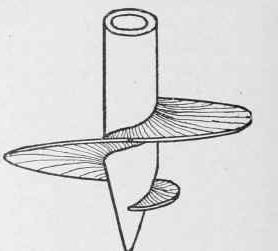
If you decide to make screw piles with your own hands, then it is important to remember that the head is needed only if it is supposed to erect a wooden structure. For houses whose walls are based on other materials, this component is not used. It is worth remembering that if you make an independent production of the main elements of the foundation, then the responsibility for the strength will lie with the manufacturer.
The end result of the work directly depends not only on the quality of the steel used in the work, but also on the strength of the weld. It will be necessary to respect the dimensions and ensure reliable fastening each element of the pile. If the support is performed correctly, its use will provide a smooth and even entry of the structure into the soil. The element will correspond to the design loads. In addition, the supports ensure maximum stability of the entire structure.
If screw piles are made by hand, then each element must have a high margin of safety and reliability, this is the only way to ensure the stability of the foundation and the entire structure. If you want to save money, then you definitely need to read the recommendations that will be useful for carrying out work on the manufacture of piles.
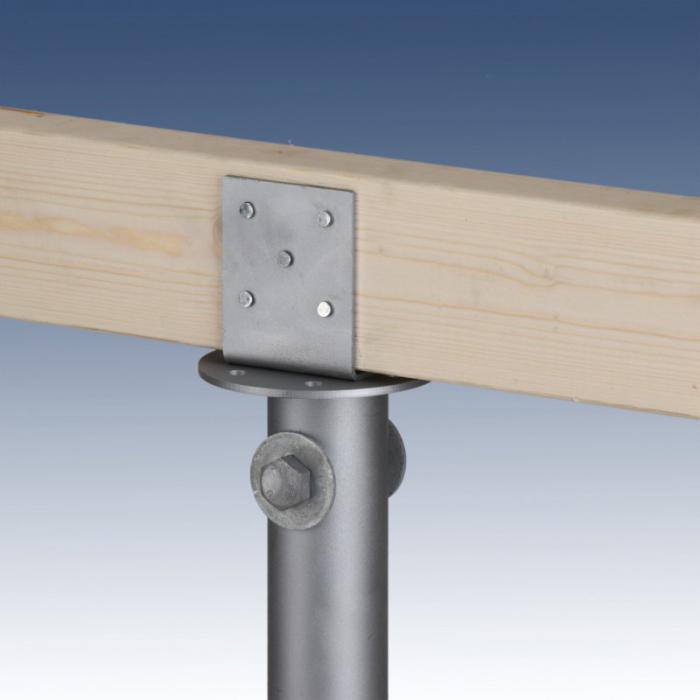
In order to make screw piles for the foundation with your own hands, it is necessary to select metal pipes, the diameter of which corresponds to the design parameters. It is equally important to consider the maximum wall thickness. Before carrying out work, it is necessary to prepare metal blanks or steel sheets, which will form the basis of the supports and the head.
Pile diameter and length

The diameter and length of metal pipes can be attributed to the main technical specifications supports. The choice of these parameters will depend on the type of soil. The length is calculated based on the load that is produced building structure... Thus, in order to make screw piles for the foundation with your own hands, you need to choose a pipe with a diameter of 89 mm. For a massive fence, it will be necessary to prepare supports with a diameter of 47-89 millimeters.
Technology of work on the manufacture of screw piles

In order to make a pile shaft, you need to prepare a pipe. At the end of this element, using a grinder, you should cut out triangular scallops, the number of which is limited to six pieces. Then a sledgehammer comes into play, with which you need to form a cone.
When making screw piles with your own hands, joints will be formed, which must be carefully boiled and aligned. The passage must be made using special blanks that have molded tips, which is most preferred. As an alternative solution, you can use a mold and steel, the thickness of which should be equal to six millimeters.
When making screw piles with your own hands, a screw blank must be made, which will need to be put on a tapered tip and slightly strengthened by welding, acting from the inner edge of the working edge. Then, using a pry bar, you will need to stretch the workpiece, turning it into a spiral. It is necessary to act in this way until the inside of the element is docked with the pipe. After that, from the inside, it is necessary to weld the running edge to the pile trunk, and then the entire remaining blade. When a screw pile is made with your own hands, the drawings of which can be viewed in the article, you will need to work on the head, which should not be difficult. In this case, special attention should be paid to the quality of the weld.
Features of the base
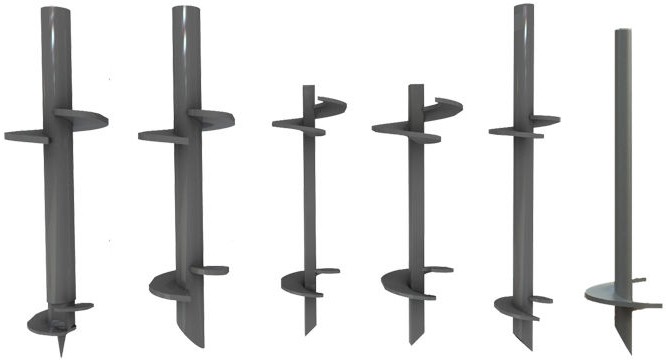
Before you start working on pile foundation, you need to carry out some preparatory work. Among them, one can single out the preliminary calculation of the parameters of the supports, as well as the determination of the distance between them. It will also be necessary to carry out geodetic studies at the construction site, this will allow to determine the characteristics of the soil. Besides preparatory work it is possible to highlight the need to treat the piles with a primer, which ensures the wear resistance of the elements. Before screwing the screw piles with your own hands, their surface must be treated with a composition in two layers. Coloring should be carried out sequentially, between layers it is necessary to withstand a technological break, which will be necessary for the final drying of each layer.
Carrying out the installation of supports
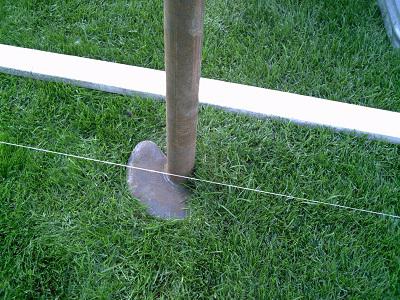
You need to start building a house on screw piles with your own hands from the highest corner, where the first support is installed. After the pile is installed, it must be cut according to the required mark. In carrying out further work, it will act as a guide. If you managed to make a screw pile with your own hands, then at the next stage you can start screwing the supports. The first ones must be placed diagonally, after which all corner piles must be installed, providing technological distances. At the next stage, you need to install supports along the perimeter of the outer walls, after which piles are attached under inner walls... The trim marks for the top of the support can be set using a spirit level.
Screwing features
Before you install screw piles with your own hands, you need to know how to screw them. This must be done using steel scrap, which is inserted into the prepared holes located in the element barrel. Additionally, on both sides, parts of a pipe with a large diameter must be put on the scrap, after which two people must begin to twist the piles into the well prepared in advance.
Installation of grillage
After the installation of screw piles with your own hands is over, you can proceed to the installation of the grillage, which is a connection designed to fix and ensure the compatibility of the supporting structures. This element is placed horizontally and is designed to increase the stability of the base both in the vertical and horizontal directions.
The only exceptions are wooden houseswhich have a sufficiently high elasticity in order to distribute the acting loads. For this reason, the wooden box must be installed on the pile heads. In other cases, you need to use a steel profile, which can be a channel or an I-beam, these elements will need to be welded to the pile post. This option should be used in the absence of rather difficult geological conditions. If you have to work in an area where swampy, floating soils prevail, and the soil is characterized by high acidity and high alkali content, then you need to equip the grillage using M300 concrete. In this case, anti-corrosion additives are used. This is true even if the service life of the structure is designed for 25 years, and no more. In this case, the piles must have holes that will provide the ability to make concreting from the inside. In this case, all supports must be reinforced. This type of foundation is more like a pile-strip foundation.
Compliance with installation technology
In the process of carrying out work, the installation of each pile element must be carried out strictly vertically and most accurately. If unexpected obstacles are found that prevent the installation of the element (this can be rock or stones), it is recommended to install the pile in the place that is most suitable, however, the installation area should not be further than three blade diameters from the original point. It is completely unacceptable to adjust the horizontal level of a pile that has already been installed. The final height must be ensured by welding a pipe length that is appropriately sized.
These measures are aimed at ensuring the reliability of the position of the piles after screwing. It is necessary to deepen the pile until it is possible to reach the supporting soil layer, the depth should not be less than the soil freezing line. This will ensure reliable fixation and immobility of the pile when exposed to impacts on the walls, which may occur due to heaving of the soil. In order to prevent such effects, it is necessary to choose the correct height of the basement, depending on the type of structure.
Finally
The installation of screw piles with your own hands today is done quite often, such bases are quite competitive, which is justified when erecting residential buildings, gazebos, small bridges, baths and piers. Such foundations are often used for buildings of any significance, but they are not intended for those houses that are supposed to be operated for a long time. In these cases, such grounds are simply irreplaceable and cost effective.
The installation of screw piles allows you to build a massive and solid foundation in a fairly quick time. It is better not to make piles for the foundation for a house yourself, but to purchase them from specialized firms. Since the highest load is imposed on these elements and the service life of the house directly depends on their quality. It is quite possible to make piles for a small outbuilding or for a fence yourself. We will learn how to do this further.
DIY screw piles: features and benefits
Screw piles are steel pipe, on the end part of which the blade is welded. That is, this element is somewhat similar to a drill. The main functional element of the pile is a screw-type tip, the blade of which, on one side, performs a supporting function, and on the other hand transfers the load. In addition, the screw part acts as an anchor that holds the pile in the ground.

In the process of building light wooden structures, the problem of heaving of the soil often arises, as a result of which the foundation collapses. To prevent this unpleasant phenomenon, the piles are installed below the depth of soil freezing. Thus, it is possible to prevent the influence of the heaving force on the foundation.
Screw piles allow you to build a fast, high-quality, economical foundation option. There are several sizes of piles, which are selected based on the size and material of construction of structures.
Among the advantages of using screw piles in private housing construction, we highlight:
- the pile foundation is erected both in winter and in summer or in autumn or spring;
- the speed of the construction of the building, the foundation is installed in a few days, work on the construction of the structure continues immediately after the foundation is made;
- no need to level the site for building a house;
- the pile foundation is suitable for any kind of soil with a complex relief structure.
However, the foundation on screw piles also has certain disadvantages. First of all, piles corrode, as a result of which they are destroyed. The service life of such a foundation is lower than that of a concrete one. In addition, poor-quality processing of the material, incorrect manufacturing technology of piles also negatively affects the duration of their operation. It is recommended to use piles when building a house only if the material is certified and has a number of documents confirming its quality.

The following factors reduce the operating time of screw piles:
- the presence of power plants near the house;
- using piles as grounding;
- prolonged heaving of soil and the presence of groundwater next to the pile;
- the presence of a railway track near the house.
Thus, if you want to choose a pile type of foundation for building a house, consider all the advantages and disadvantages of piles in operation.
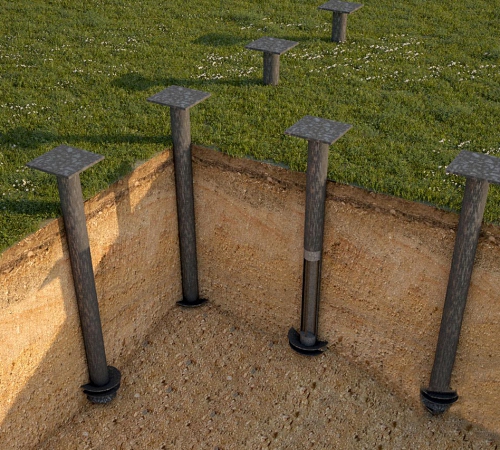
DIY screw piles video and varieties
In relation to the composition of the screw piles, they are welded and cast. The first option - the more economical ones, have the form of a pipe on which a pointed tip is welded. These piles are not able to withstand heavy loads and are used for the construction of gazebos and outbuildings. Welds on piles are susceptible to rapid corrosion, and their poor-quality performance leads to complete destruction of the pile. In case of inaccurate welding of the blade, the pile is set unevenly into the ground during the screwing process. In addition, problems arise when driving the piles into stone soil or into large roots.
This further leads to uneven settlement of the house and its emergency position. Therefore, when choosing piles for the foundation, special attention should be paid to the quality of welded joints on the piles.
A pile with a molded tip is more reliable, but also more expensive. For the manufacture of such piles, a casting method and a vacuum sphere are used. These tips are characterized by high precision of installation. The cost of such piles is a quarter higher than that of welded piles. Cast tips are also amenable to high-quality anti-corrosion treatment and are recommended for use in the construction of massive buildings.
DIY screw piles for the foundation video:
The service life of a foundation with a cast tip is about one hundred years. However, when buying such piles, you should also take special care not to fall for a fake. The quality of the handpiece is determined by the accuracy of the factory technology. For example, after the construction of a pile, it is compulsorily amenable to heat treatment.
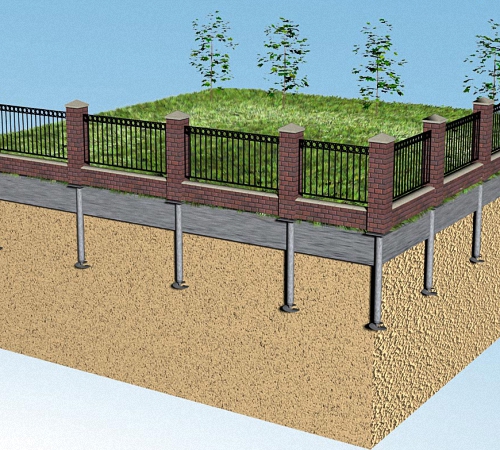
DIY screw piles for the foundation - manufacturing technology
The screw pile has the form of a hollow pipe, one part of which has a cutting part in the form of a sharp tip. In the process of setting the pile into the ground, the cutting part allows the pile to move deeper. Thus, it is possible to securely fix the pile in the ground.
The structural structure of the piles allows them to be installed independently, without the involvement of additional special equipment. However, the term of use of the foundation directly depends on the quality of the material from which the piles are built.
Before starting the manufacture of screw piles, determine their structure, which includes three main parts:
- bearing element - has the shape of a pipe, with a minimum diameter of 9 cm;
- screw part - provides screwing of the pile;
- the upper part on which the timber is fixed.
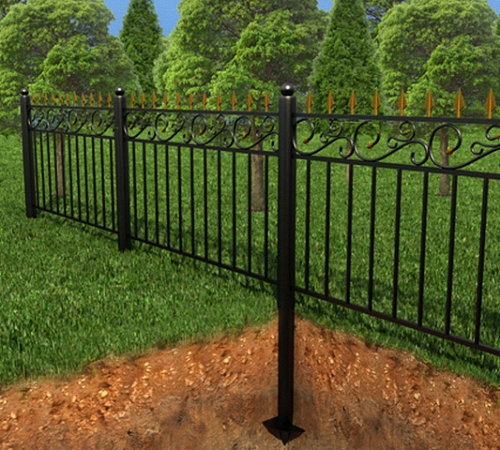
For the manufacture of piles, a pipe with a certain diameter is used. In the presence of a non-cast tip, for the manufacture of a pipe, it is necessary to use several sectors connected by a welding machine. To eliminate the seams, the material is straightened.
The machined discs are used to manufacture the screw part. The size of the screw part depends on the depth of the pile. Further, using a vice, the workpiece is clamped in a certain position and stretched to the desired size. After fixing it on the surface of the pile, the element is coated with an anti-corrosion solution or paint.
A head-shaped part is installed on the top of the pile. It is on it that the channel or beam will be fixed. The width of the pile blades is at least 3 cm larger than the pipe diameter.
Screw piles DIY installation video:
Features of installing screw piles with your own hands
In the process of working on the installation of screw piles, you will need:
- reinforcement used for marking;
- grinders;
- levers;
- welding machine;
- normal level;
- concrete solution.
Initially, you should perform a number of preparatory work for the installation of the foundation part. On this stage drawing up drawings, performing calculations, determining the length and dimensions of piles. For this, it is necessary to study the geological features of the soil, in relation to them, the depth of the piles, the number of piles for a particular building, etc. is determined.
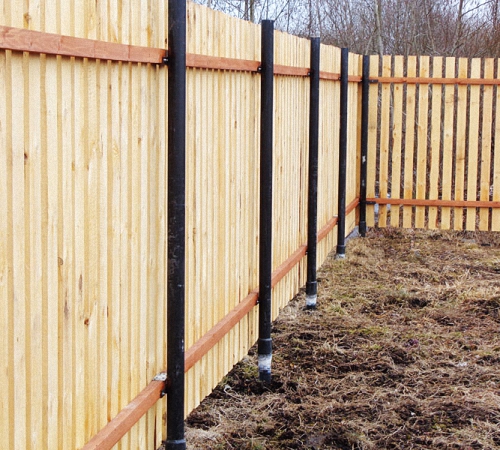
For ease of use of the plan, it should be divided into several parts, which facilitate the control of the installation site of each pile. It is necessary to make a pile field from the installation of piles, which are installed at the corners of a rectangle. Reinforcement is installed on the corner parts of the site. Consider the width of the strapping. At the same time, the installation of piles is necessarily carried out along the central part.
A tightly stretched rope is used to connect the reinforcement or the peg. Where the rope intersects, the pile installation points are determined. The installation of the reinforcement is carried out in relation to the drilling points. Measure the diagonal sections that result from the intersection. piles should be installed at the same distance from each other.
It is possible to use a budron for work, but its diameter should be several centimeters larger than the pipe diameter. Installation work should be started from the corner sections. The spacing between the piles must be the same. A magnetic level is mounted on the pile, which prevents it from leaving in a vertical position. The quality of the manufactured foundation directly depends on the density of the pile field.

Installation work - how to tighten screw piles with your own hands
For screwing in piles, pipes are used that act as levers. A scrap is installed inside the pipe, with its help the pipe is screwed in. Please note that this process requires special physical effort, so it will require at least two people to complete it.
There are two ways to install screw piles with your own hands. The first involves the use of a drill, and the second is based on the installation of a pile without a drilling rig. In the process of self-screwing the pile without a drill, the soil underneath is compacted and the pile is securely fixed in a certain position.
Thus, moisture does not penetrate through the compacted soil and it holds the pile well. To align the piles, they also use improvised means in the form of spacers or scrap. A screw jack is used to eliminate small deviations.
Next, a common frame is mounted. For these purposes, you will need a laser level. In relation to this measuring device, piles are trimmed and concrete mortar for pouring inside pipes. Next, the headrests are installed, the seams are cleaned. An element is mounted on the headrests to perform a common bond, which increases the rigidity and durability of structural elements.
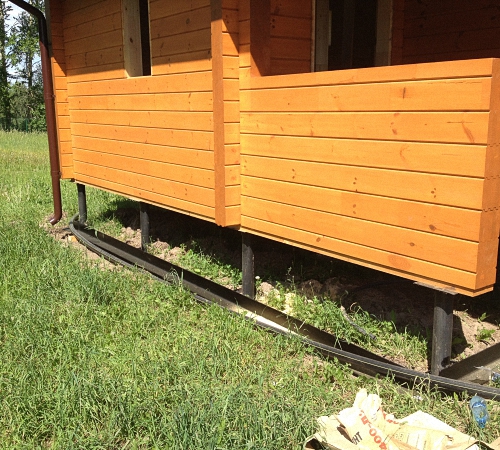
It is quite difficult to build a house with screw piles with your own hands. However, we suggest that you familiarize yourself with general recommendationswhich will greatly simplify this process:
- for the manufacture of steel lugs, use grade 25 metal, while using cold welding;
- with an increase in the diameter of the screws, the complexity of the manufacture of blades increases, since in order to unbend the steel disks, it is necessary to apply certain physical efforts;
- if the pile is unevenly installed in the soil and has gone to the side, then to correct the situation, it is enough to cut off its upper part and install another pile next to it; you do not need to pull out the pile, since the previously loosened soil will not hold it securely;
- make sure that the solution completely fills the pipes, this process must be performed with special care;
- if there are two blades on the surface of the pile, they should be installed below the amount of soil freezing, otherwise, the pile will be subject to heaving forces;
- all welding components must be coated with an anti-corrosion compound.
The process of installing piles is simple, however, well-installed piles are obtained only if the installation technology is carefully followed.
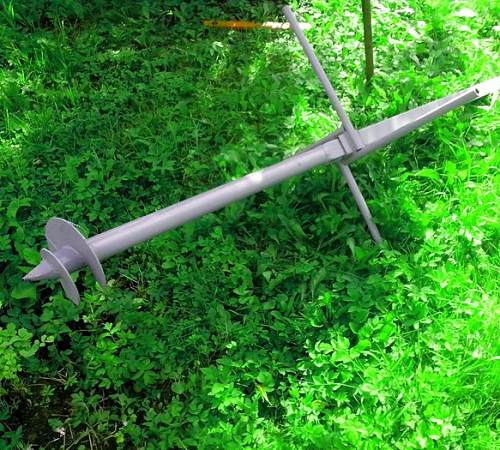
Among the main structural elements of the pile, we note the stem part, the cutting element and the tapered tip. If the building is made of wood, then the head is another part of the pile.
Self-production of piles is a rather complicated process, the quality of which directly depends on the service life of the building under which the piles are laid. The resulting piles are determined by the quality of the steel and welds, with the help of which the elements were connected to each other.
A well-made pile can be easily screwed into the soil, has a high resistance to mechanical stress and easily copes with the functions assigned to it.
For self-construction of screw-type piles, you will need:
- pipes made of high-quality steel with a diameter that is calculated in advance and depends on the pressure on the foundation;
- steel sheets for the manufacture of blades, screw section, etc.
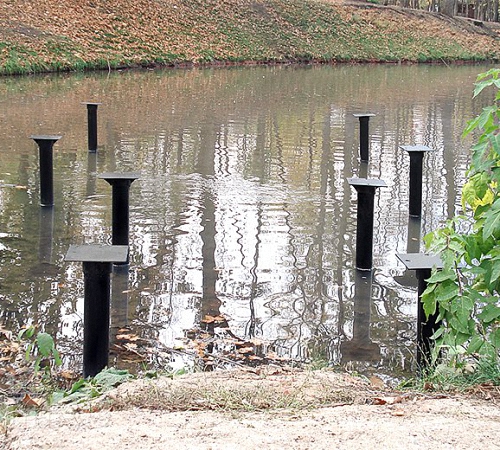
The main technical indicators of the screw pile are the length of the pipe and the size of the blade. In order to build the stem of the pile, it is necessary to cut triangles at the end of the previously prepared pipe with a grinder, and with the help of a sledgehammer, you need to form cones on them. For the manufacture of the screw part, special blanks with a cast tip are used. With the help of the mount, the workpiece is stretched in the form of a spiral, then connected to the pipe with a welding machine. Monitor the quality of welded joints; after the construction of the pile, they are treated with a special solution.
Homemade piles are used for the construction of small outbuildings, garages, gazebos and other structures. To build a house on a screw-pile foundation, it is recommended to use purchased pile options.
Do-it-yourself installation of screw piles video:
The content of the article
The foundation for the house is the fundamental structure, therefore, the requirements for it are strict. It must be as strong and durable as possible, have a flat horizontal vertical surface, so that both the walls and the roof retain their geometric accuracy during operation.
If with the device strip foundations everything is more or less clear, then homemade screw piles raise a number of questions that we will try to solve in this article.
When are screw piles used?
The use of metal piles is justified in the case when the soils at the construction site are heaving, or the site is subject to frequent flooding. They can also be used in areas with uneven terrain. In addition to the construction of foundations for houses, screw piles are used for the construction of such structures as - power lines, fences, bridges and others.
In residential construction, screw piles are most often used in the construction of frame-panel or frame-panel houses with low weight.
The advantage of screw piles
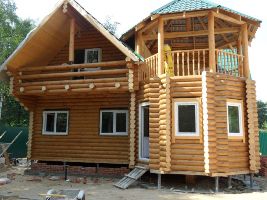
However, factory-made piles are not so cheap, so many who decided on such a construction are concerned about how to make a screw pile themselves in order to reduce the cost of construction.
What are screw supports?
These are hollow metal pipes, at the end of which there are specially arranged blades and a cone, through which they are screwed into the ground. The tips, blades, diameter and total length of the piles may vary.
In the factory, if these blades are not cast as a single piece with the pipe, then they are welded by high-profile specialists using special welding equipment. In addition, the piles must have a strong anti-corrosion coating, which is hardly possible with the independent manufacture of these foundation elements.
Therefore, the question of how to make a screw rod with your own hands can be considered only for very light buildings, the service life of which is limited by a short time.
When installing these products, a test screwing them into the ground is carried out. The end of the pile must reach a solid foundation, otherwise the building will constantly sag, 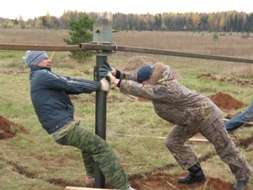 as a result, its geometric dimensions will change and further destruction of the entire structure is possible.
as a result, its geometric dimensions will change and further destruction of the entire structure is possible.
The number and length of piles is determined by engineering calculations based on geological survey data and the design dimensions of the building. At the end of the installation, concrete is poured into the cavity of the piles. If the terrain is difficult, the piles can be built up, i.e. build up their heads. For the further erection of the building, the top of the piles is tied together with a grillage made of reinforced concrete beams, slabs, wooden beams, or channel bars.
What are the difficulties in making piles with your own hands?
Self-production of a screw rod, to reduce the cost of construction, of course, is possible, but is it worth doing this, considering all the risks that may arise from poor-quality manufacturing of this element.
First of all, the screw rod must have sufficient strength to support the weight of the entire building, and for this you need to know the steel grade, thickness and length of the rod. You can only find out through complex engineering calculations, which are beyond the power of an ordinary developer.
The second point is the anti-corrosion protection of the metal pile. After all, everyone knows that being in the ground, any iron rusts with an inconceivable speed, since the soil  constantly wet. If in the production of piles by an industrial method, they are protected by a layer of zinc coating, then in the conditions of their own construction, the developer can apply only a few layers of paint or other composition that prevents the formation of corrosion.
constantly wet. If in the production of piles by an industrial method, they are protected by a layer of zinc coating, then in the conditions of their own construction, the developer can apply only a few layers of paint or other composition that prevents the formation of corrosion.
However, when screwed into the ground, the side surfaces come into contact with everything that comes in the path of the pile, and the best protection can be compromised if too hard pieces of earth or stones are caught in the ground. In this case, the corrosion process can begin immediately after the pile is installed..
Thirdly, you will not be able to make the tip of the pile of proper strength, here you will need a qualified welder, the necessary welding equipment, since with poor-quality welding there is a risk of blades tearing off or their deformation when the pile is screwed into the ground, and this is fraught with a decrease in the strength of the foundation or its distortion. And here preference is given to products industrial production.
This is another factor to consider before making your own screw piles.
As you can see, there are too many disadvantages in the manufacture of piles on their own, but people still decide on their handicraft production. And why? There can be only one answer to this question - the price. Foundations made on prefabricated piles are too expensive; moreover, the quality does not always correspond to the price.
If you already had to purchase such products, then you should try and find exactly the manufacturer who has a positive reputation on the market.
Because the cheapest screw piles should initially be suspicious. After all, people have not in vain come up with the saying "good cannot be cheap."
How to make a pile?
But still, for those who decided that a self-made screw pile would be more profitable in terms of economy, consider how it is done. It should be noted right away that homemade piles are used only for buildings with light weight.
First of all, you need to stock up on durable material, for which we select a hollow metal pipe with a diameter of 70-100mm, a tip and blades. The blades can be taken from  any borax. The tip will have to be made independently by bending the metal in the shape of a cone and welding it along the seam. The joints of the blades and the tip are cleaned with sandpaper to a shine of metal.
any borax. The tip will have to be made independently by bending the metal in the shape of a cone and welding it along the seam. The joints of the blades and the tip are cleaned with sandpaper to a shine of metal.
The next point will be the choice of the pile length, which depends on the depth of soil freezing, terrain, loads and other things. All this is calculated using special formulas, but we are considering home-made piles, for which such calculations are not required, since the construction of a light structure is assumed.
The blades and tip are welded to the pile, after which this design should be treated with an anti-corrosion compound. Bitumen mastic or a special primer for metal can be used as an anti-corrosion material.
A hole is made on the top of the pile, into which scrap should be inserted when the pile is screwed into the ground.
The number of self-made piles is calculated based on the fact that one pile will be required for every 1.5 meters.
Piles must be installed at the corners of the building and at all intersections of the inner and outer walls.
The pile must be screwed in strictly vertically. It is not allowed to install a pile in a previously dug hole and then fill it with soil. In any case, the end of the pile must be screwed into the dense soil to a depth of at least 60-70 cm. The hollow part of the pile is filled with concrete. This can be avoided if the pipe wall thickness is at least 6-8 mm.
In the case of uneven terrain, it is allowed to build up piles with heads to level the horizontal mark, after which a grillage is made from a bar, metal of reinforced concrete beams or a monolithic slab.
In conclusion, I would like to say that no matter how well home-made piles are made, they cannot guarantee the strength of the foundation for a residential building, since in this case engineering calculations are required. Making piles with your own hands is beneficial only when building such light buildings as a garage, a bathhouse, a barn and the like.
Do-it-yourself screw piles installed can significantly save money on the foundation device in comparison with the construction of foundations from other materials.
Hilly terrain, wooded area, weak soils (swampy, peaty) - all this does not become an obstacle for the construction of a screw-pile foundation.
For the construction of fences and light buildings, it is quite possible to make screw piles yourself.
The pile screw support is assembled from several parts:
- barrel (support tube);
- tip;
- blades.
Trunk
The supporting part of the pile is made of metal pipe... Pile production involves the use of pipes of various sizes. The size of the pipe diameter is the main factor affecting the bearing capacity. The diameter of the pile for the foundation determines the area of \u200b\u200bits application, the bearing load and the composition of the soil.
| № | Barrel diameter | Priming | Application area | |
|---|---|---|---|---|
| 1 | 57 mm | Up to 800 kg | Waterlogged soil | Fences, light buildings |
| 2 | 89 mm | Up to 1.4 tons | Swampy and peaty soils | Fences, garages, piers, country houses |
| 3 | 108 mm | Up to 3.5 tons | Except for rocky ground | Heavy fences, log houses |
| 4 | 133 mm | Up to 6 tons | Except for rocky ground | Brick and monolithic houses |
This table shows the most common shaft diameters used in construction. In individual cases, pipes of other sizes can be used for the manufacture of piles.
Tip
 Weld the piles with high quality, otherwise, when screwing, the blades will disperse
Weld the piles with high quality, otherwise, when screwing, the blades will disperse When making screw piles with your own hands, it is very important to correctly make and weld the tip to the pile-screw support. In industrial production, ferrules are generally cast. The equipment for the production of screw piles allows the manufacture of cast lugs in the form of a cone.
Welded tips are used to erect a support base in soft loose soils. Welded cones are less durable than cast tips.
A poorly welded tip cone can disperse as it enters the ground, causing the support to collapse.
For the construction of fences and light buildings, the lower end of the trunk is made in the form of a pipe cut at an angle of 45 degrees. The hole is welded with an elliptical metal sheet.
Beveled screw piles are very popular. This design significantly reduces the cost of making piles. The beveled ends of small-diameter barrels are in no way inferior to tapered tips.
In conditions of heavy load and dense soil, the screw posts are installed only with tapered tips.
Blades
 Keep blades small
Keep blades small The ease of screwing the support into the soil depends on the size and sharpness of the edges of the blades. This, in turn, affects the timing of the construction of screw foundations.
Usually 2 blades are welded to the trunk. If necessary, in addition to two blades, a third additional blade is installed. It should be borne in mind that the additional half of the screw will increase the resistance subgrade, which will require more effort to screw the support into the soil.
However, an additional pile screw will provide the support with increased load-bearing capacity and facilitate the entry of the column shaft into dense soil layers.
Self-made screw piles are made with small diameter blades and should be made of sheet metal no more than 2 - 3 mm thick. Thicker metal will require the use of industrial equipment, such as guillotine shears.
A carefully executed drawing of the pile is the key to the correct manufacture of the screw support.
Conditions for making screw piles with your own hands
How to make a screw pile for the foundation with your own hands? This requires a number of conditions:
- employee qualifications;
- the presence of a workshop;
- equipment.
Employee qualifications
 The employee must own construction tools, including such as a grinder and an electric drill.
The employee must own construction tools, including such as a grinder and an electric drill.
Experience with electric welding is required. Knowledge and implementation of safety regulations during welding is a mandatory requirement.
The qualification of the welder must be confirmed by appropriate documents.
Workshop availability
All work on the manufacture of screw piles should be carried out in a well-ventilated area. The workshop must have a shield to connect to electrical network welding equipment.
Equipment
 To ensure the safety of welding, the equipment must be grounded.
To ensure the safety of welding, the equipment must be grounded.
In construction, welding machines are used that operate from a 3-phase network. In the absence of such conditions, it is quite possible to use a welding device operating from a household network with a voltage of 220 V.
In order to make supports, you need a workbench or assembly table. The length of the table should be such that you can put a pipe up to 3 meters long on it.
Welding is carried out on a metal workbench. As a last resort, the workbench countertop is covered with a metal sheet. This will prevent the wooden parts of the table from being ignited by welding sparks. For information on how to make screw piles, see this video:
It is necessary to have in the workshop fixtures for fixing parts of the pile. As a rule, these are vices and clamps.
Set locksmith tool must be located in an accessible area of \u200b\u200bthe timeline.
Screw pile manufacturing technology
 Cut the tip blades according to the template
Cut the tip blades according to the template
Consider the independent production of screw piles in stages:
- Mounting holes are drilled in the upper part of the barrel. Levers are inserted into these holes to screw the support into the ground.
- To cut a metal sheet for workpieces of conical tips, a template is cut out of a dense material (cardboard).
- Drawings of pile-screw supports give an accurate idea of \u200b\u200bthe size of the tip and its manufacturing technology. Tapered tips are bent from a metal sheet 6 mm thick. The sheet is bent in the shape of the conductor. As a conductor, you can use a smaller cast cone or make it yourself. The weld must be of good quality. A poorly welded tip cone can disperse when entering the ground, causing the support to collapse.
- The planes of the blades are cut out according to the template.
- The blanks of the blades are bent, forming a helical surface.
- The edges of the blades are machined with an abrasive wheel to form the cutting edge of the screw.
- The pipe is rigidly fixed together with the tapered tip. The cone is welded along the circumference of the pipe. The position of the support body and the tip cone on the same axis is important. Misalignment of the cone with the pipe barrel can lead to the destruction of the tip, and then the entire support.
- When forming the beveled end of the rod, the supports are cut off with an abrasive wheel at an angle. The hole is tightly welded with a metal blank.
- Then the blades are welded to the support body. Large paddle pitch is convenient when screw foundation erected in sandy soil. A shallower pitch of the blades is made to install the foundation in dense soils.
- The entire support is coated with an anti-corrosion compound. High-quality anti-corrosion protection extends the service life of the support up to 50 years.
At the end of welding, quality control of welded seams is carried out. Slag pits and poorly welded areas can ruin the weld under load. Therefore, all identified shortcomings must be eliminated.
Some nuances in manufacturing
 The inner surface of the pipe does not need to be processed. After installing the supports in design position and leveling the upper ends, concrete mortar is poured into the shafts.
The inner surface of the pipe does not need to be processed. After installing the supports in design position and leveling the upper ends, concrete mortar is poured into the shafts.
The concreting of the supports must be done. This significantly increases the bearing capacity of the supports and increases the stability of the foundation foundation.
In addition to the above, it should be added that the screw support is a responsible high-tech design. For details on the manufacture of screw piles, see this video:
Any unprofessional attitude towards self-production of supports can subsequently lead to trouble. Therefore, if there is at least some doubts about one's own strengths and abilities, it is better to buy prefabricated piles.
The production technology of screw piles in the factory guarantees the quality and reliability of these products.
With the availability of materials, the power tool can be designed dIY screw piles, slightly reducing the construction budget. The savings are 15 - 20%, but the home craftsman can be sure that the CBC will have the maximum resource. Many unscrupulous manufacturers use a seam pipe to reduce the cost of products, allow defects when centering the tip, which reduces the characteristics of the foundation many times.
The design of industrial SHS is extremely simple. Seamless thick-walled pipe has holes or clamps in the upper part for attaching levers, a pointed lance tip with a blade in the lower part. For soft soils, a second blade can be used at a distance of 0.4 - 0.6 m from the lower rotor. A special anti-corrosion coating protects metal elements from destruction.
Making a screw pile step by step
At the initial stage, it is enough to buy seamless pipe with a wall of 4 - 5 mm, regardless of which structure will rely on the pile field. For the rest of the SHS elements (welded helical pile), sheet metal 4 - 6 mm thick will be required. All parts are joined by welding, for cutting you will need an angle grinder with a disc for metal or more modern equipment (for example, plasma cutter), which is often present in the arsenal of a home craftsman.
Pile body
Depending on the depth of the formation with sufficient bearing capacity, the length of the SHS is 2 - 3 m. It is inconvenient to screw in longer products manually, therefore, if necessary, a three-meter product is immersed, which is built up near the ground with a piece of exactly the same pipe several times. The pipe must meet several criteria when choosing:
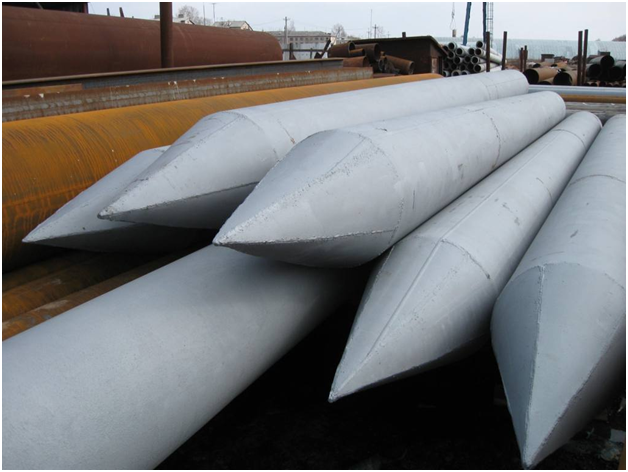
The specified parameters are optimally matched by the assortment of steels 09G2S (corresponds to GOST 19281) or St20 (corresponds to GOST 8732).
Tip options
The easiest way to make a pile is with a pipe tip. Then comes the cruciform peak, petal technology. The most difficult tip is the weld-on tip.
Cruciform lance
This tip requires four blanks of sheet steel. The technology looks like:
- sheet cut - 1 round plug for pipe; 1 triangle (the base is equal to the pipe diameter, the height is 2 - 2.5 diameters); 2 gussets serving as stiffeners for the triangle
- tack - the triangle is installed at right angles to the base-plug, kerchiefs lean on the sides
- welding - double seam for all joints
The blade in this variant cannot be welded to the peak, so it starts higher. In combination with the cruciform shape, this significantly increases the tightening force.
The lance is made from several triangular shaped petals. For diameters 76 - 89 mm, 4 petals are usually used, for diameters 108 - 159, they are increased to 5 petals, for pipes 219 - 325, 7 - 11 petals are used. The template has dimensions:
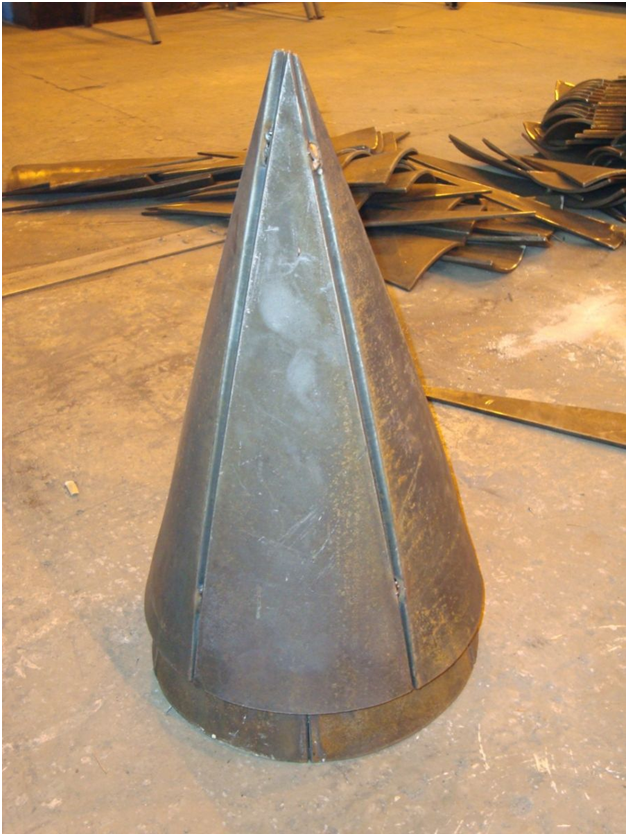
A peak is welded from the blanks, which must be welded to the pipe, observing the alignment of the cone, the body of the pile. It's not easy at home. Offsetting the tip a couple of centimeters to the side will provide beating, loosening the soil instead of compacting the borehole walls.
The technology is similar to the previous method with minor additions:

Due to the similarity of technologies, the home master does not have a lathe, the alignment is also done by eye. The quality of the pile in this case depends entirely on the skill of the cutter cutting the teeth for welding.
Many screw pile manufacturers implement two types of taper-free modifications:

In the latter version, when filling the inner cavity, the concrete is supplied under pressure, comes out in the depth of the layer to the outside, after solidification it increases the bearing area, the bearing capacity, respectively. These piles are the easiest to make, however, the blade starts on the pipe body, which increases the screwing force. A mechanized method of immersion is recommended (drill + multiplier).
Blades
In factory piles with cast, welded tapered ends, the blade starts at the bottom third of the peak, then extends to the pipe body. This significantly reduces the screw-in force for manual immersion. The lower blade is mounted on all SHS modifications, the upper blade is used in soils with insufficient bearing capacity. When self-made, two-blade SHS are rarely made.
To prepare this SHS element, you will need sheet steel at least 5 mm thick. The manufacturing technology of a single-start blade is as follows:
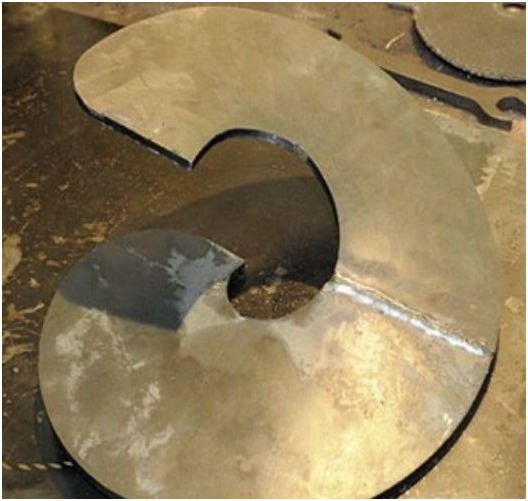
In homemade SHS with a cruciform tip or without a tip, the blade starts from the lower edge of the pile body. All joints are welded with a double seam, the scale is knocked off before anti-corrosion treatment.
The second propeller is made similarly to the lower blade, it is mounted 40-60 cm higher than it, depending on the characteristics of the formation located above the bearing layer. For an additional screw, 4 mm steel can be used, since the loads during immersion of the SHS on it are much less. 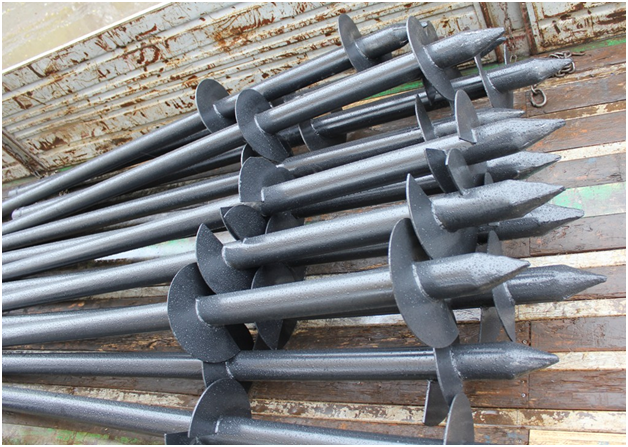
Two-blade piles are more stable in the vertical direction after being buried by 70 cm. They withstand prefabricated loads from a cottage 1.5 times greater than single-blade modifications. More resistant to side loads, they are often used for fences made of profiled sheet with high windage, banner extensions.
Lever attachment assembly
To rotate the SHS, levers are used, the ends of which must somehow be fixed in the upper part of the SHS. For this, holes are usually made into which you can insert two crowbars or an adapter for a torque amplifier (multiplier) when screwing in the CBC with a drill. In order to preserve the pipe, in some cases two clamps are welded onto it (reinforcement 12-16 mm), which are cut off with a grinder after immersion. 
Due to the large diameter of the levers (scrap or 1 inch pipe), drilling the holes is ineffective. Therefore, they are burned by welding or gas-cutting, then the angle grinder is aligned with a disc for metal. The holes should be located two diameters below the pipe edge, opposite each other.
As clamps usually used 12-16 mm reinforcement (smooth or periodic section), bent along the diameter of the levers. The disadvantage of this method is the increase in labor costs (welding, cutting the clamps after the installation of the pile), the advantage is the preservation of the body of the pile (extra 15 - 20 cm), which is important for the construction budget. 
Metal structures used underground will rust even in the absence of oxygen in the lower soil layers. Therefore, at the end of the welding work, the viburnum is knocked off from all the seams, the pile is completely covered with anti-corrosion compounds. The most effective first layer of protection is hot-dip galvanizing. However, this method is not available at home. Therefore, the following compositions are used as soil:
- zinc-containing paints
- vL05 soil
- soil IR02
The second layer is the compositions:

These paint and varnish mixtures in combination with a primer provide a 30 - 90 year life of the pile field. Only fiberglass protects against electrochemical corrosion (stray currents in the ground), which cannot be applied with high quality at home.
Following the above technologies, you can make an SHS pile yourself, providing a high foundation resource. Changes in the design of the blades, arbitrary peak sizes will lead to an increase in torque, a decrease in bearing capacity products.



